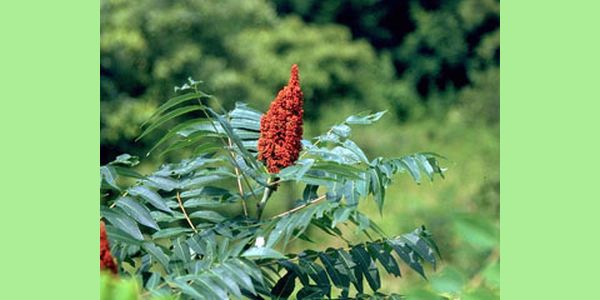Radko Tichavsky is a Czech born Mexican Agrohomeopath. He is a co-founder and director of Instituto Comenius in Mexico and author of Handbook of Agrohomeopathy, 2007 (Spanish) and Homeopathy for Plants, 2009 (Spanish) and creator and teacher of Holohomeopathy.
Agrohomeopathy Course!
Radko Tichavskyi is now offering a one semester virtual course in Agrohomeopathy (in English). You can learn how to define and analyze holons and how to repertorize the specific homeopathic treatment beyond just disease or pest names. You can find out more here: www.icomenius.edu.mx
A Materia Medica and Repertory for Plants: Mark Moodie hosts the website “Considera”, which provides a growing M.M and Repertory for plants and discusses resources for biodynamics and Agrohomeopathy .The website allows the world community to contribute their experiences in planting.
Dear Mr. Tichavsky,
I have a Wisteria tree that has formed quite a few nodules around the trunk base and near the branches. The nodules seemed to be increasing in numbers. I have tried to remove them but they continue to grow back. The tree seems to be growing without any problems, but the nodules are wrinkly, round and not solid, resembling a corklike texture. What do you suggest I try?
Thanks,
Shane
Radko Tichavsky:
Dear Shane,
The “clown gall” is a disease related to the presence of Rhizobium radiobacter, formerly Agrobacterium tumescens. The nodeles first have a corklike texture but with time they are harder and turn dark brown or black. As the disease progresses, the galls will encircle the trunks and branches, cutting off the flow of sap that nourishes the plant. It is a very old bacterium, resistant to treatments and also affects some plants of economic importance such as vine.
The main preventive remedy traditionally suggested for this symptomatology is the application of Thuya occidentalis according to my experience. Once the disease is developed, as it is in your Wisteria´s case, the Thuya occidentalis is practically useless, and the application of this remedy results only in expenditure of time.
Then we must understand a little more about the the phytohormone biosynthesis pathways of the Wisteria sp. plants in relation to Rhizobium radiobacter, and how the Rhizobium manages to increase big concentrations of auxins and cytokinins, resulting in significant zeatin and trans-zeatin concentrations.
The homeopathic remedy I recommend to use is Lentinus edodes 30 CH (you can buy this fungus in oriental shops and it is known as shiitake). Prepare the mother tincture and dynamize up to 30 CH. Apply in the tree and also around it. It must be consistently applied once a month as a spray for two years, because of the latency of R. radiobacter in the soil and also in the surrounding area. In this sense the revitalization will happen in the entire holon, and the result of the cure will be permanent as described by Hahnemann in the first paragraph of his Organon of medicine.
Greetings Mr. Tichavsky,
The last two years we have a big problem with the buxusplants, because they are stricken with a fungus. In summer the leaves get a yellow/brown coulor and they are falling. Afterwards some green returns, but the plants are suffering and become more ill. We have a sandy soil. Buxus sempervirens is an outdoor ornamental plant. We live in the eastern part of Holland, 25 miles from the German border. In summer the average temperature is 22 degrees Celsius. Medium annual rainfall: 750 mm per square meter. Maybe you know the solution. I hope so!
Thankful greetings,
Jos Hering – Holland
Radko Tichavsky:
Dear Jos,
The Buxus sempervivens plants recently show variations in their vitality and symptomatologies of Box blight attacks, a set of pathogenic fungi including Vallutella buxi, Pseudonectria buxi and in some countries Cylindrocladium buxiola. It is very important not to overhead watering, because humidity facilitates the multiplication of fungi. It should also be taken into account that the spores of the mentioned fungi have latency up to 6 years in the soil.
The decrease of the vitality of the plants of Buxus sempervivens is due to the concentrations of lead in the environment and climatic changes mainly related to the intensity of UV rays. In this case the treatment must be sustained in the long term and it can save the plants, although the majority of producers despair and eliminate the plants, which normally does not solve the problem due to the resistances or survival of the fungus spores in the soil.
Sulphur 6 CH can be applied by spraying with coconut oil as an adjuvant (only a very little is used to emulsify sulfur so it will adhere better to the leaves) to start the treatment and then to continue with applications of Ganoderma applanatum 6 CH alternated with Rhus toxicodendron 6 CH with soap of Opuntia ficus-indica as an adjuvant during the hot months and olive oil during the cold months.
Hello Radko Tichavsky,
Our pear trees were infested this summer with Sawfly slugs, which look sort of yellowish- green. They destroyed most of the leaves on many trees. We live in the U.S., in Wenatchee, which is North Central Washington state (zip code 98001). We only get 14 inches of rain per year. On average, there are 200 sunny days per year. In summer the temperature goes to around 88 degrees Farenheit. In winter it goes down to 24 Farenheit. Can you suggest anything we can do for next year?
Thank you
Laura Schmidt
Radko Tichavsky:
Dear Laura,
The larvae of Caliroa cerasi are erroneously called slugs, as they somewhat resemble butterfly caterpillars. When feeding on leaves, they take a position in which the later end of the body is not in contact with the leaf but is coiled downward, hanging down. It generally develops two generations of adults a year and the most harmful one in defoliation is usually the second that usually appears in July or August.
You can apply Azadirachta indica 6 CH alternated with Urtica urens 12 CH and bionosode made from the soil of your orchard. Apply these remedies once a month (beginning from April), spraying it with a little potassium soap as an adjuvant to easily control this disease, and what is very important, without affecting the natural predators of this insect. Over time you will notice that in two or three years, an application in April and another in July will be enough to be free of problems in your pear trees.




